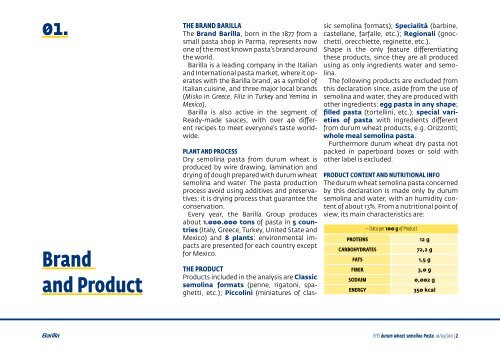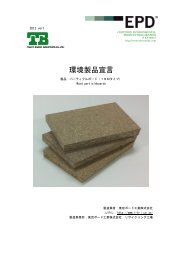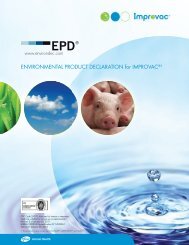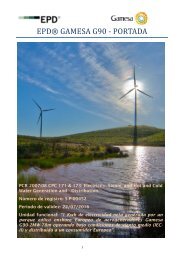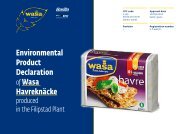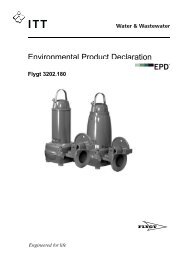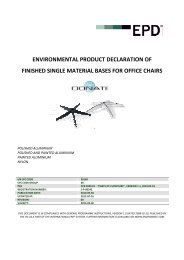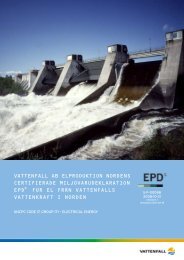brand Barilla - The International EPD® System
brand Barilla - The International EPD® System
brand Barilla - The International EPD® System
Create successful ePaper yourself
Turn your PDF publications into a flip-book with our unique Google optimized e-Paper software.
01.<br />
the <strong>brand</strong> barilla<br />
<strong>The</strong> Brand <strong>Barilla</strong>, born in the 1877 from a<br />
small pasta shop in Parma, represents now<br />
one of the most known pasta’s <strong>brand</strong> around<br />
the world.<br />
<strong>Barilla</strong> is a leading company in the Italian<br />
and <strong>International</strong> pasta market, where it operates<br />
with the <strong>Barilla</strong> <strong>brand</strong>, as a symbol of<br />
Italian cuisine, and three major local <strong>brand</strong>s<br />
(Misko in Greece, Filiz in Turkey and Yemina in<br />
Mexico).<br />
<strong>Barilla</strong> is also active in the segment of<br />
Ready-made sauces, with over 40 different<br />
recipes to meet everyone’s taste worldwide.<br />
Brand<br />
and Product<br />
Plant and process<br />
Dry semolina pasta from durum wheat is<br />
produced by wire drawing, lamination and<br />
drying of dough prepared with durum wheat<br />
semolina and water. <strong>The</strong> pasta production<br />
process avoid using additives and preservatives:<br />
it is drying process that guarantee the<br />
conservation.<br />
Every year, the <strong>Barilla</strong> Group produces<br />
about 1.000.000 tons of pasta in 5 countries<br />
(Italy, Greece, Turkey, United State and<br />
Mexico) and 8 plants: environmental impacts<br />
are presented for each country except<br />
for Mexico.<br />
the product<br />
Products included in the analysis are Classic<br />
semolina formats (penne, rigatoni, spaghetti,<br />
etc.); Piccolini (miniatures of clas-<br />
sic semolina formats); Specialità (barbine,<br />
castellane, farfalle, etc.); Regionali (gnocchetti,<br />
orecchiette, reginette, etc.).<br />
Shape is the only feature differentiating<br />
these products, since they are all produced<br />
using as only ingredients water and semolina.<br />
<strong>The</strong> following products are excluded from<br />
this declaration since, aside from the use of<br />
semolina and water, they are produced with<br />
other ingredients: egg pasta in any shape;<br />
filled pasta (tortellini, etc.); special varieties<br />
of pasta with ingredients different<br />
from durum wheat products, e.g. Orizzonti;<br />
whole meal semolina pasta.<br />
Furthermore durum wheat dry pasta not<br />
packed in paperboard boxes or sold with<br />
other label is excluded.<br />
product content and nutritional info<br />
<strong>The</strong> durum wheat semolina pasta concerned<br />
by this declaration is made only by durum<br />
semolina and water, with an humidity content<br />
of about 13%. From a nutritional point of<br />
view, its main characteristics are:<br />
proteins<br />
carbohydrates<br />
fats<br />
fiber<br />
sodium<br />
energy<br />
— Data per 100 g of Product<br />
12 g<br />
72,2 g<br />
1,5 g<br />
3,0 g<br />
0,002 g<br />
350 kcal<br />
EPD durum wheat semolina Pasta, 10/03/2011 | 2


